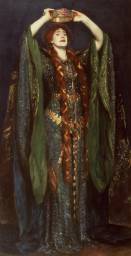I decided I needed to take a trip to visit the Occupy London Stock Exchange (LSX) site at St. Paul’s Cathedral. For those who don’t know, this London Occupy site has been the focus of an important discussion about the role of the church in people’s lives. Three high-ranking church officials resigned over the mismanagement of the protest movement on their doorstep, and for weeks a debate has raged over the position of the church in defending the needs of the poor.
As I write this, an eviction notice has been served, and a legal case is proceeding, but for the moment the Occupy site remains. It continues to be a peaceful, and respectful protest. From what I can tell, the media has gone from being cautiously supportive, to openly negative and nasty, and currently to blithely ignoring the continuation of the Occupation. Next week however, on November 30th, a country-wide general strike is called for. I suspect we will be drowning in a sea of contradictory media reports and opninons.
On the day I went to St. Paul’s, the fall wind had picked up. It was sunny, but sudden gusts picked tents off of the ground, fluttering them 5 feet in the air before dropping them down again on the cobblestones.

A well-organized information tent was connected to “Tent City University”, a tent space dedicated to encouraging research, thought and intelligent discussion. “Needs” boards were posted (First Aid supplies, kitchen supplies) as were volunteer opportunities. I had heard that a newspaper had been produced a few days earlier and asked if I could see a copy. It is an impressively produced, well-written journal. This is a very organized movement, and their dedication to education and discussion is paramount.
There are speakers and events every day at LSX. On the day I was there, Manuel Castels was speaking. Castels is a sociologist and an expert in the field of information technology and society. His “Information Age Trilogy” is one of the most frequently quoted sources for understanding contemporary communication. He was visiting the site en route between Barcelona and Los Angeles and he spoke about strengthening the connection between the urban space and cyberspace. The Occupy presence will create change through the lateral thinking possible in cyberspace. But it is still essential to initiate the dialogue in the urban environment. He stressed the need to avoid violence at all costs, suggesting that if the movement was evicted from St. Paul’s “there are lots of other churches in London”. Smaller groups could occupy more locations, and remain connected through the internet. This would not dilute the movement. It will only grow in strength. He spoke about the need to stay connected, “our imagination and our courage should do the rest”.

Following Castels was the daily meeting of the General Assembly. I must admit that I haven’t been following the political structure of the Occupy movement closely. While I have been reading the media, I haven’t been following the actual source. Writing this blog is a way of beginning to put things into a perspective for myself. Those of you reading the blog in other countries will have heard other stories, and may have other responses to the movement. But I am impressed by the intelligence and innovation of Occupy London, and by their honest desire to work from a consensus basis.
Having had my own experiences trying to operate an organization through consensus, I know how very difficult it is to get anything done in this way. So I was really encouraged to hear that there are daily facilitation training sessions to help people to learn how to keep the “flow of information and the flow of action though the consensus process”. They recognize that the Occupy movement represents all segments of society and therefore there will be many different perspectives and beliefs. But as one speaker from the General Assembly said: “Deep political disagreements shouldn’t prevent us working together”.
It is, as a journalist recently remarked, a very young movement, one that is still finding its feet. Yet it is already a complex societal structure, with a plethora of different working groups (ranging in topics from finance to health to media). Looking at the calendar of events for next week, I can see a full schedule of presentations and open discussions on such topics as “social dreaming”, “overcoming negativity” and “the misery of job insecurity – a catalyst for social change?”.
Perhaps most surprisingly, and most excitingly, every effort is being made to remain inclusive. There were recent media statements about “undesirables” at the camp site. An offensive article in the London Evening Standard with the headline: “Needle bins at St Paul’s camp to beat junkie health hazard“ prompted a statement from the camp: “We have never sought to hide the fact that some of the more vulnerable members of our society have sought solace at our camps, not so much for the food and shelter we provide as for the sense of community we have established in contrast to their experience in wider society.”
What I saw at LSX was noble, and fascinating. It seems clear to me that we are witnessing the birth of a new form of political expression that will use the internet to reach its ultimate manifestation, whatever that may be. Hopefully it will be a peaceful revolution.
“Occupy London is a place where everyone is valued for what they contribute to our society and everyone is encouraged to participate in that society to the best of their ability. We are very clear about the standards we expect but we are, above all, inclusive. That is something to be proud of.”












